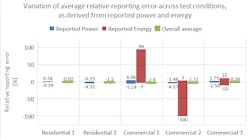This article was published in the July/August 2012 issue of LEDs Magazine.
View the Table of Contents and download the PDF file of the complete July/August 2012 issue, or view the E-zine version in your browser.
+++++
I recently had the privilege to participate as a judge in the Lighting for Tomorrow competition that is sponsored by the American Lighting Association (ALA), the Consortium for Energy Efficiency (CEE), and Underwriters Laboratories (UL). The process was very educational as I saw some outstanding solid-state lighting (SSL) products that truly leverage the uniqueness of LED sources – a trend we also noted in our Lightfair coverage (page 32). But I also saw some products that seem to be looking for a need and also some that were just not designed or constructed well.
Lighting for Tomorrow is a competition in its tenth year seeking to increase the availability of quality, energy-efficient lighting products for residential applications. We judges reviewed many product types ranging from retrofit lamps to chandeliers along with controls. There were almost 150 entries – a new record I’m told. I along with you will have to await the tabulation of our score sheets that will be revealed at the ALA Annual Conference on September 13.
Still, I thought I would share some observations on both the judging process and products. It’s quite amazing what you learn when you go through such a detailed evaluation of products with others that share an interest in LED lighting but that come from a completely different perspective. The panel included members from lighting distributors, the research sector, a utility and a test lab.
I found myself focused more on trying to understand the design of the products – the LEDs used, the driver characteristics, and the thermal elements. Others were far more focused on the shape of a light pattern, subtle difference in color and CRI, and the finish and color of the actual fixture.
There were some very well designed products in terms of quality components and construction that failed to deliver acceptable optical performance. For example, a given product might produce too much glare for use in a residential application. Lighting manufacturers might be well served to run a new product prototype by some experienced distributors before launching the product commercially. There were many suggestions made as to how simple changes could improve optical performance.
Meanwhile, I hope my fellow judges won’t hold my constant focus on component quality against me. I suspect they tired of me trying to discern if a product used quality components or LEDs that might suffer lumen or color maintenance issues too quickly. Moreover, I saw some assembly techniques that looked rock solid and others that I would judge likely to fail.
There were products that used LEDs in very innovative ways and delivered unique and attractive form. There were others that sought to do the same thing, I assume, but had form factors that just might not work according to many on the panel.
We also ran across instances where we could only speculate about what caused a product to perform the way it did. But it sure seemed like some product makers are struggling to avoid intellectual-property conflicts and are perhaps compromising design elements in doing so. That’s subject for more research and perhaps a feature article down the road.
I’ll tell you more about my feelings on some specific products after the partners announce the winners.




